Archaeology & History
The Oldest Human Footprints in North America Could Redefine Prehistory as We Know It—and It’s All Thanks to These Tiny Seeds
The discovery upends what we thought we knew about prehistoric migration from Asia to the Americas.
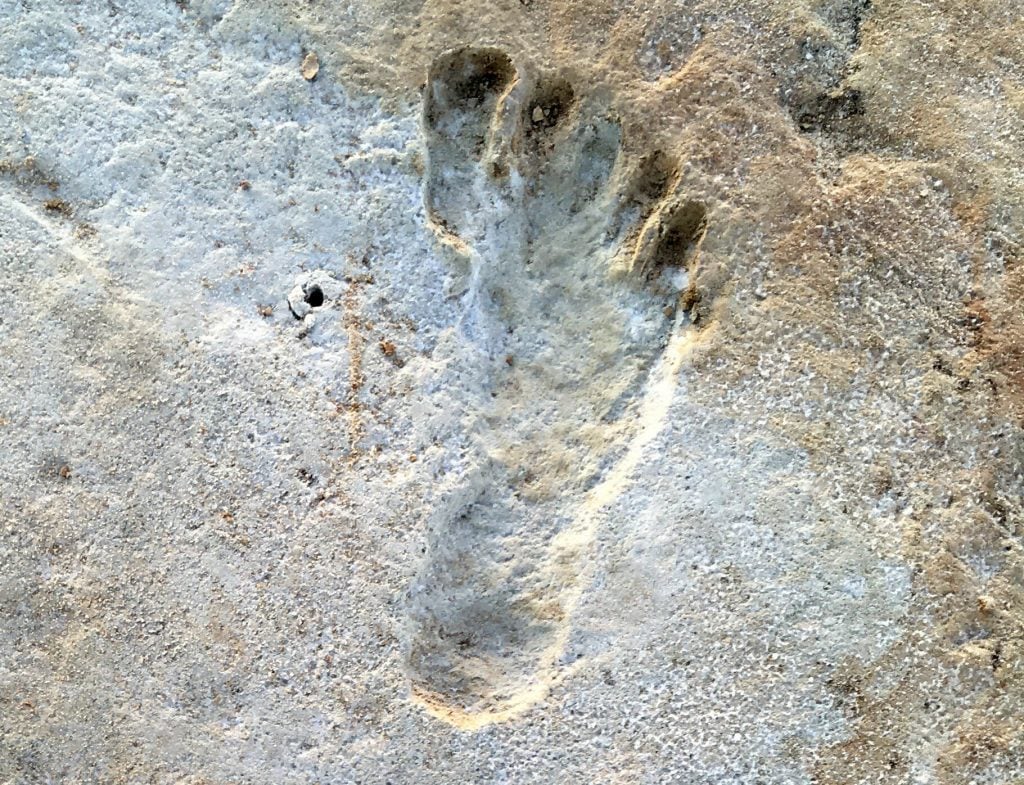
The discovery upends what we thought we knew about prehistoric migration from Asia to the Americas.

New data on prehistoric footprints suggest they are the earliest ever found in North America, dating to 23,000 years ago—thousands of years before humans were previously believed to have made their way to the continent.
David Bustos, an archaeologist and resource program manager at New Mexico’s White Sands National Park, found the tracks at the park in 2009 on the shore of a lake that has long since become a desert. The impressions ancient humans left behind in the mud on what is now known as Alkali Flat have fossilized over the centuries, becoming rock.
Scientists with the U.S. Geological Survey conducted radiocarbon dating on large quantities of seeds from Ruppia cirrhosa, an aquatic ditch grass, which were stuck in the footprints. They determined that the marks were made between 22,800 and 21,130 years ago. The new analysis was published Friday in the journal Science.
“This is a bombshell,” Ruth Gruhn, a University of Alberta archaeologist not involved in the study, told the New York Times. “On the face of it, it’s very hard to disprove.”
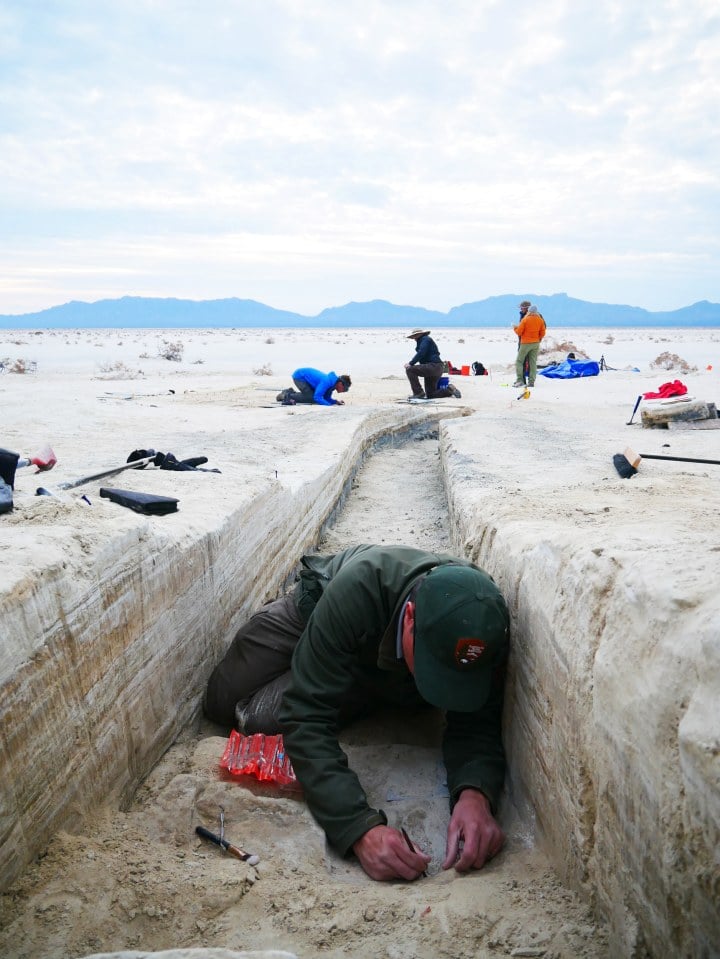
Researchers excavating prehistoric footprints in the bottom of a trench at White Sands National Park, New Mexico. Photo: Dan Odess. Courtesy of the National Park Service.
It’s unlikely, but possible, that the seeds could have absorbed old carbon leached into the water by nearby rocks in a “reservoir effect.” But the scientists dated hundreds of seeds and found that the ages were consistent across the board, with older seeds on the bottom and younger ones at the surface.
Assuming the dating is correct, that means that prehistoric humans settled in North America either before or during the last Ice Age, rather than after it, fundamentally changing the timeline of our species and our world.
“This new study provides the first unequivocal evidence of a sustained human presence in the Americas thousands of years earlier than most archaeologists thought was likely,” Thomas Urban, a research scientist with the Cornell Tree Ring Laboratory, said in a statement.
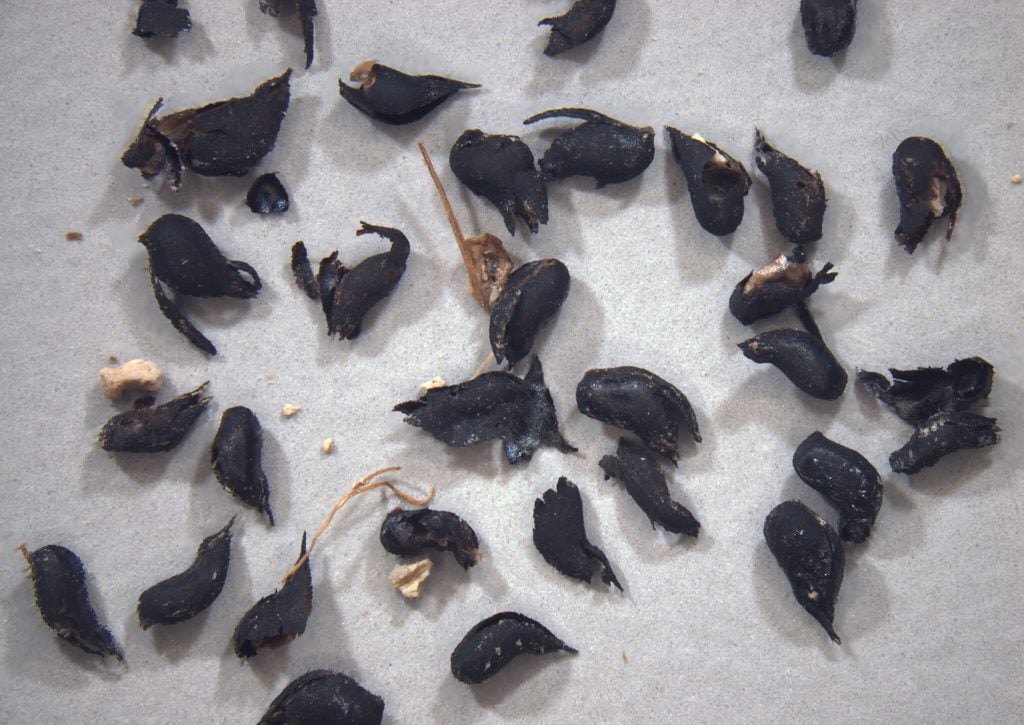
Radiocarbon dating on ancient ditch grass seeds found in the footprints determined that they were made up to 23,000 years ago. Photo by David Bustos, courtesy of White Sands National Park, New Mexico.
Since the 1930s, when the archaeologist Edgar B. Howard discovered an ancient spear tip near Clovis, New Mexico, the prevailing theory has been that the first prehistoric humans in North America were the Clovis people. They had made their way across a now-submerged land bridge connecting Siberia and Alaska around 13,500 to 13,000 years ago and spread throughout the continent.
But the “Clovis First” theory has been challenged in recent years by other archaeological finds, leading to divisions within the field.
“The peopling of the Americas is one of those things that has been for many years very contentious, and a lot of archaeologists hold views with almost religious zeal,” the paper’s lead author, Matthew Bennett of Bournemouth University in the U.K., told CNN.
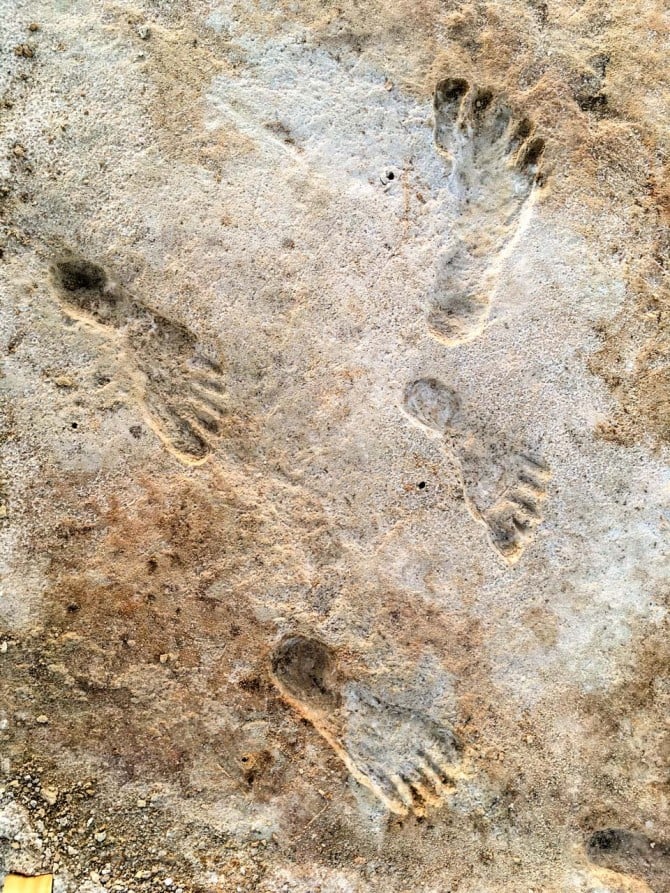
Footprints found at White Sands National Park in New Mexico providing the earliest evidence of human activity in the Americas. Photo courtesy of the National Park Service/U.S. Geological Survey/Bournemouth University, U.K.
In 1979, Canadian archaeologist Knut Fladmark hypothesized that the first humans to reach North America did so via small boats. His theory seemed unlikely given that the continent’s coast would have been blocked by giant glaciers.
But it gained traction in 1997 with the discovery of Monte Verde, an archaeological site in coastal Chile, that was found to be 14,500 years old—a millennium older than the earliest Clovis site.
Other finds have followed, including an Oregon cave 200 miles inland with 14,300-year-old human feces, traces of a 15,000-year-old campfire in Idaho, and the 15,000-year-old Buttermilk Creek Complex in Texas. Perhaps oldest of all is the Chiquihuite Cave in Zacatecas in central Mexico, where experts have dated stone tools to 30,000 years ago.
Some Clovis researchers question the dating of those sites, but the reliable dating of the footprints makes it more likely that at least some other pre-Clovis finds are also accurate, and that the first migrations to the Americas began before the Ice Age.
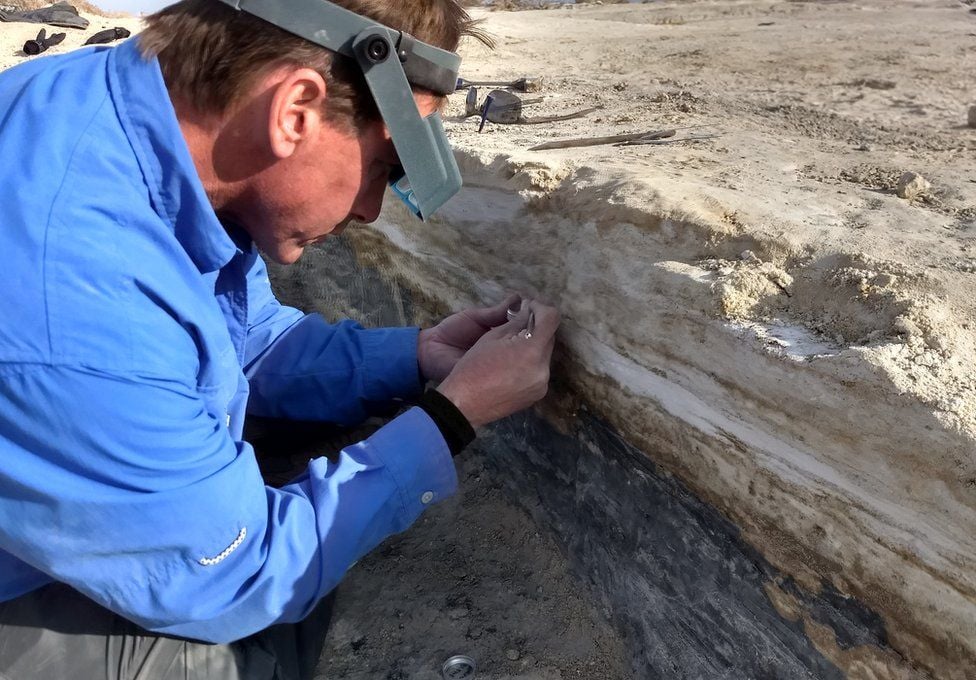
Researchers testing seeds found embedded in the footprints. Photo courtesy of Bournemouth University, U.K.
“Our work has shown that the ice sheets were probably controlling entry into North America, but that we had made it in one glacial cycle earlier,” Sally Reynolds, a mammalian paleontology professor at Bournemouth University and study co-author, told Vice. “Working back from that, we think that at around 30,000 years ago, humans would have traveled from Siberia over the Bering land bridge.”
Other experts contend there were ice-free, settler-friendly zones in pockets up and down the coast of North America that could have allowed humans to move inland before the ice sheets melted. (The Atlantic recently published an article about the search for pre-Clovis sites on California’s Channel Islands, where archaeologists are focusing their efforts on submerged areas that would have been above sea level in prehistoric times.)
If there were indeed human beings in the Americas before the Clovis people, their populations appear to have died out, perhaps during the ensuing Ice Age. Genetic testing of contemporary Indigenous people shows that the Native American line diverged from Asia some 16,000 years ago.
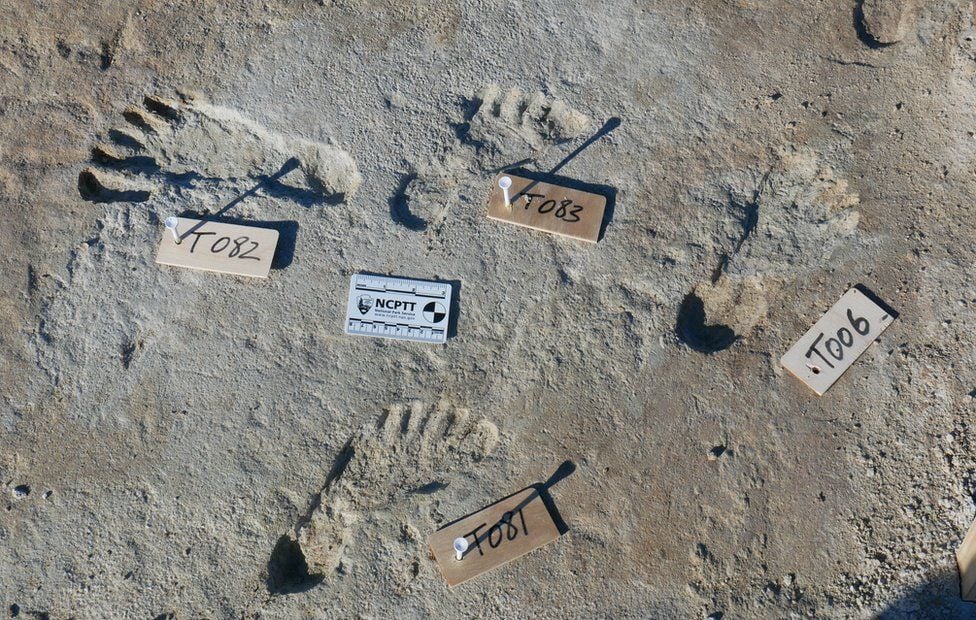
Children and teenagers left most of the prehistoric footprints. Photo courtesy of Bournemouth University, U.K.
Based on the new radiocarbon dating results, experts believe that the former lake in White Sands was continually occupied by humans for around 2,000 years—and that the lake shrank over time as temperatures rose.
“When that warming occurred,” Jeff Pigati, a geologist at the U.S. Geological Survey and one of the paper’s coauthors, told Gizmodo, “the lake level dropped and exposed this big flat area for people to walk across. That’s what allowed the tracks to be there in the first place. This entire story is driven by climate change.”
Tens of thousands of years later, the footprints are fragile formations of clay and silt. Judging by their size, experts believe they mostly belonged to children and teenagers with flat feet, thanks to being constantly barefoot.
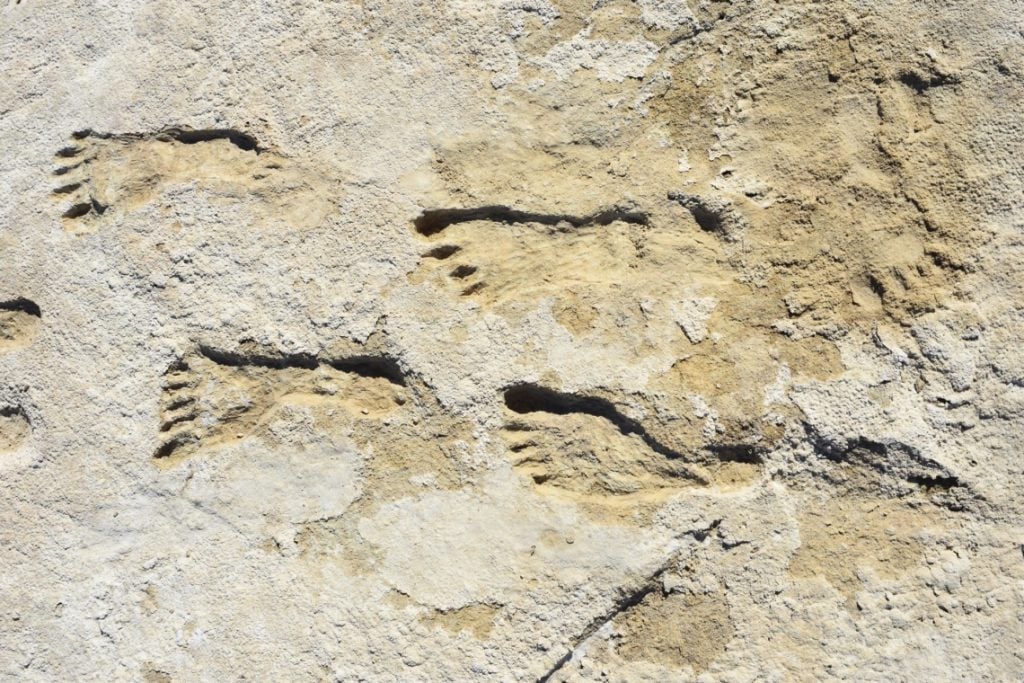
These footprints are North America’s oldest sign of human settlement.
Photo: David Bustos. Courtesy of White Sands National Park, New Mexico.
“The footprints left at White Sands give a picture of what was taking place, teenagers interacting with younger children and adults,” Bennett said in a statement. “We can think of our ancestors as quite functional, hunting and surviving, but what we see here is also activity of play, and of different ages coming together. A true insight into these early people.”
But more importantly, the find could permanently alter the conversation about when humans first laid eyes on North America.
“One of the reasons there is so much debate is that there is a real lack of very firm, unequivocal data points,” Bennett told the BBC. “That’s what we think we probably have. Footprints aren’t like stone tools. A footprint is a footprint, and it can’t move up and down [in the soil layers].”

An illustration of the region that is now White Sands National Park in New Mexico, between 21,000 and 23,000 years ago. Image by Karen Carr, courtesy of Bournemouth University, U.K.
The footprints were, however, filled in with sediment over the ages, and it is only recent erosion that has made these “ghost tracks” visible to 21st-century eyes. Some are so faint that they can only be seen with ground-penetrating radar. To date, thousands of human prints have been found at White Sands in 61 distinct trackways over an area of 80,000 acres, as well as prints left by mammoths, dire wolves, camels, and even a giant sloth, among other animals.
“All of the trackways we’ve found there show an interaction of humans in the landscape alongside extinct animals,” Reynolds said in a statement. “We can see the coexistence between humans and animals on the site as a whole.”
Scientists are now working as quickly as they can to document these traces of human activity while they still can, before further erosion erases them from the sands of time.
“The only way we can save them,” Bustos told the Associated Press, “is to record them—to take a lot of photos and make 3-D models.”
See more photos of the footprints below.
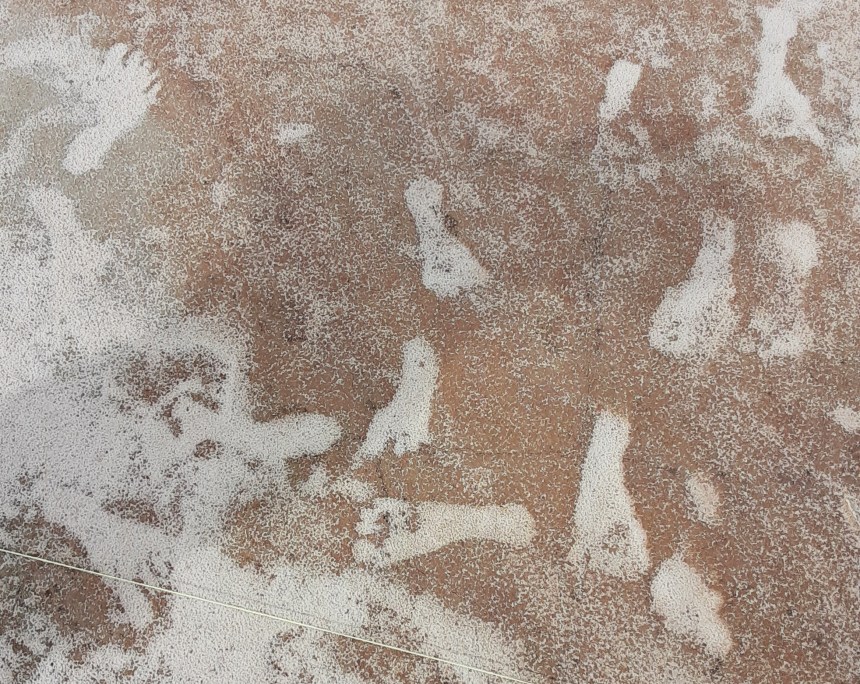
Ancient footprints in White Stands National Park, New Mexico, have been dated to 23,000 years ago. Photo courtesy of the National Park Service/U.S. Geological Survey/Bournemouth University, U.K.
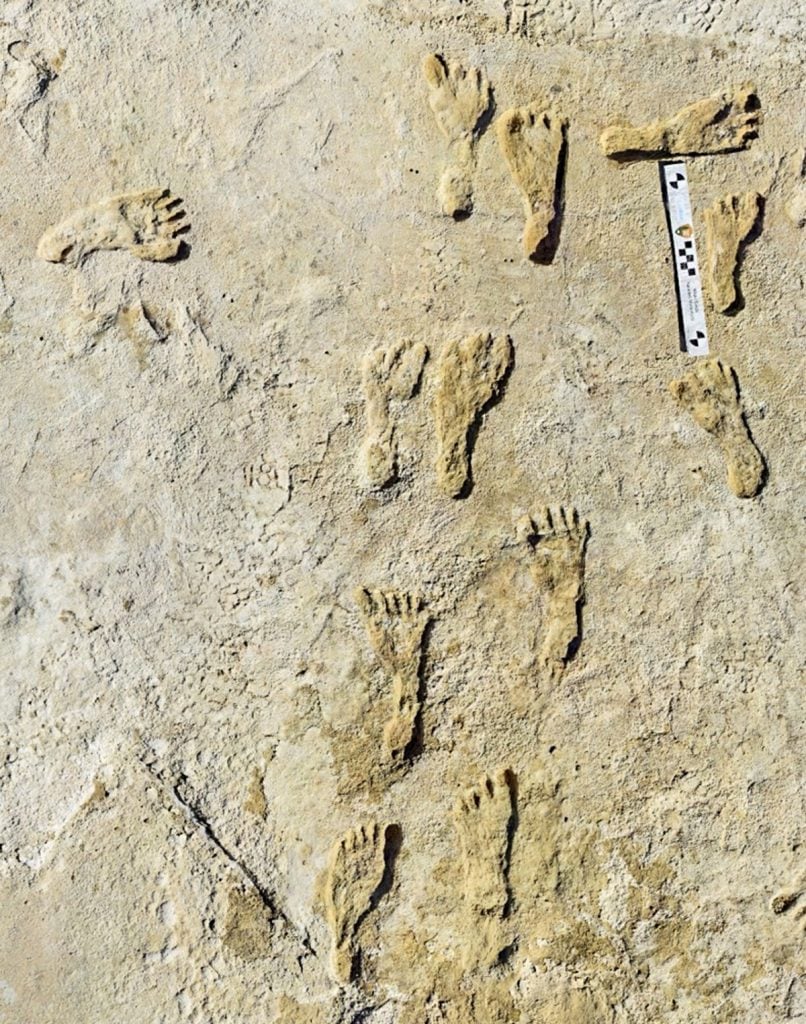
North America’s oldest human footprints, found in White Sands National Park in New Mexico. Photo courtesy of the National Park Service/U.S. Geological Survey/Bournemouth University, U.K.
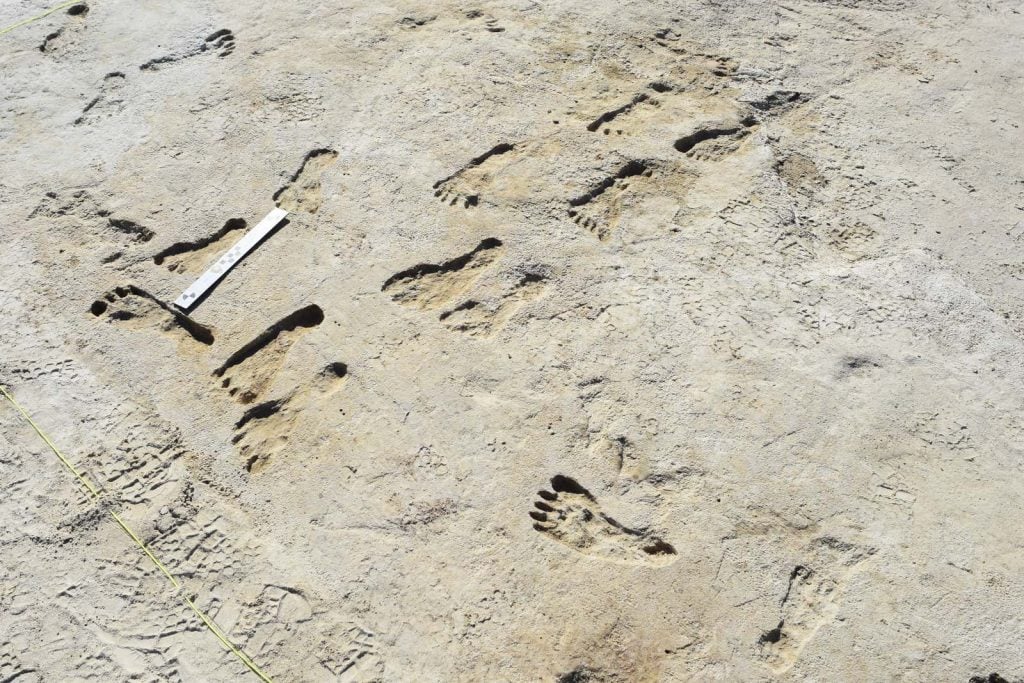
North America’s oldest human footprints, found in White Sands National Park in New Mexico. Photo courtesy of the National Park Service/U.S. Geological Survey/Bournemouth University, U.K.
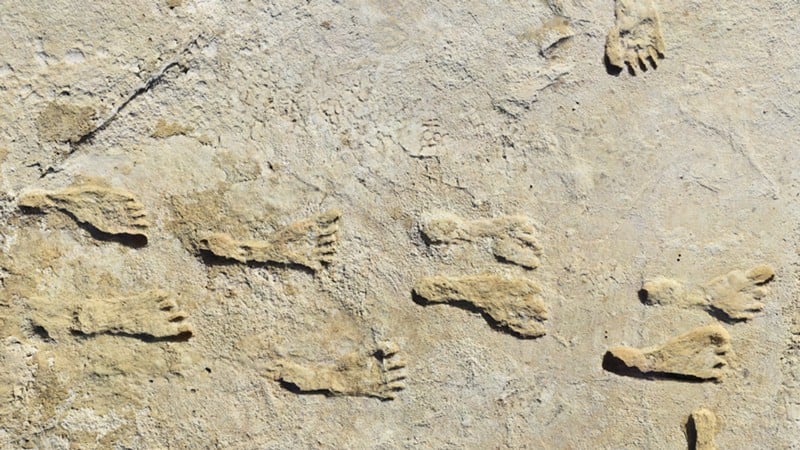
North America’s oldest human footprints, found in White Sands National Park in New Mexico. Photo courtesy of the National Park Service/U.S. Geological Survey/Bournemouth University, U.K.
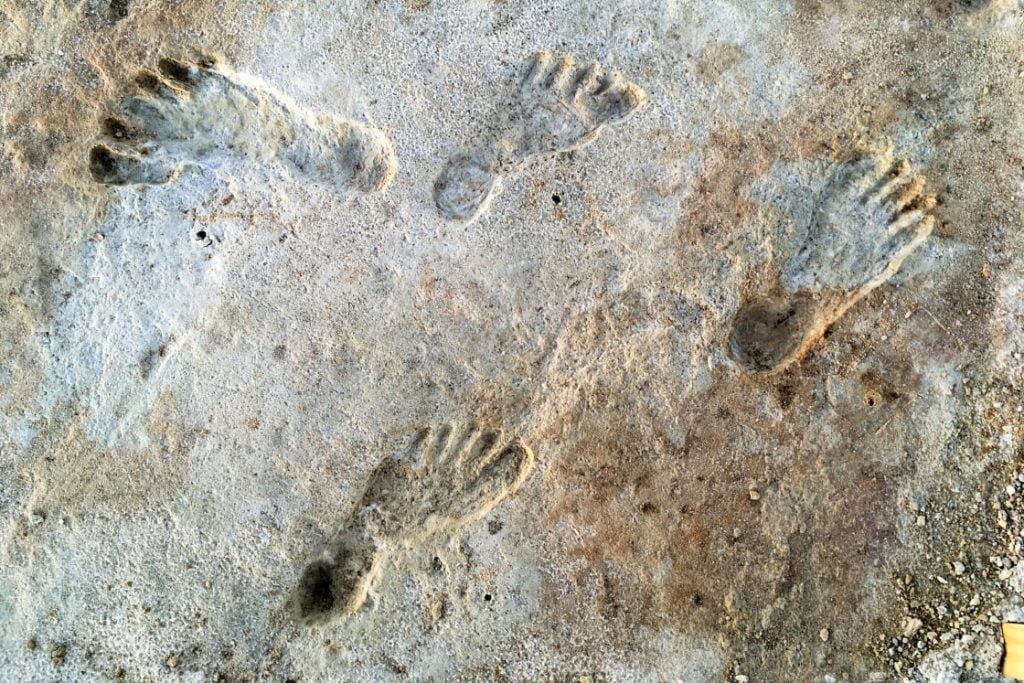
North America’s oldest human footprints, found in White Sands National Park in New Mexico. Photo courtesy of the National Park Service/U.S. Geological Survey/Bournemouth University, U.K.
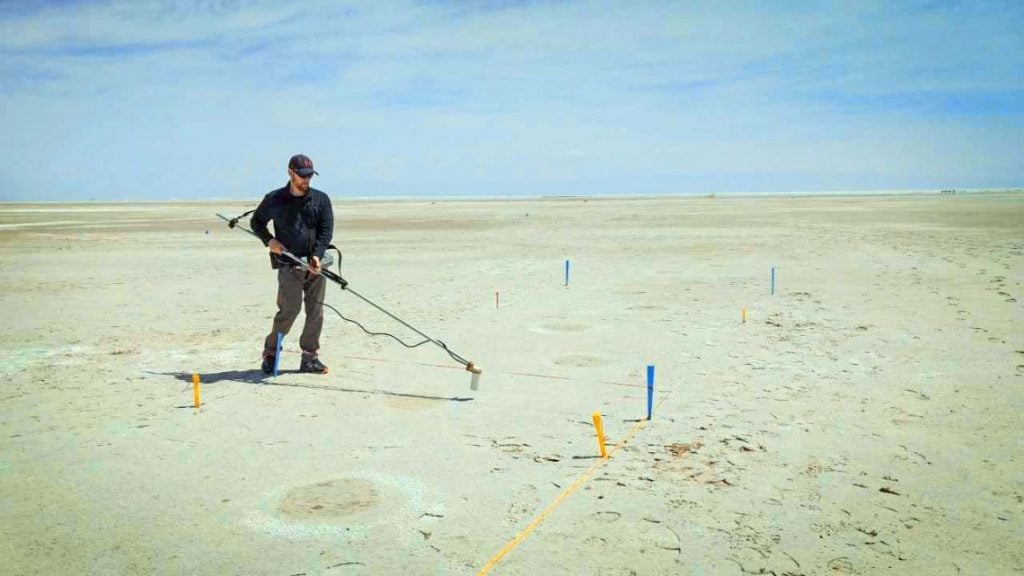
Thomas Urban conducts magnetometer survey of mammoth footprints at White Sands. Photo: David Bustos, courtesy of White Sands National Park, New Mexico.
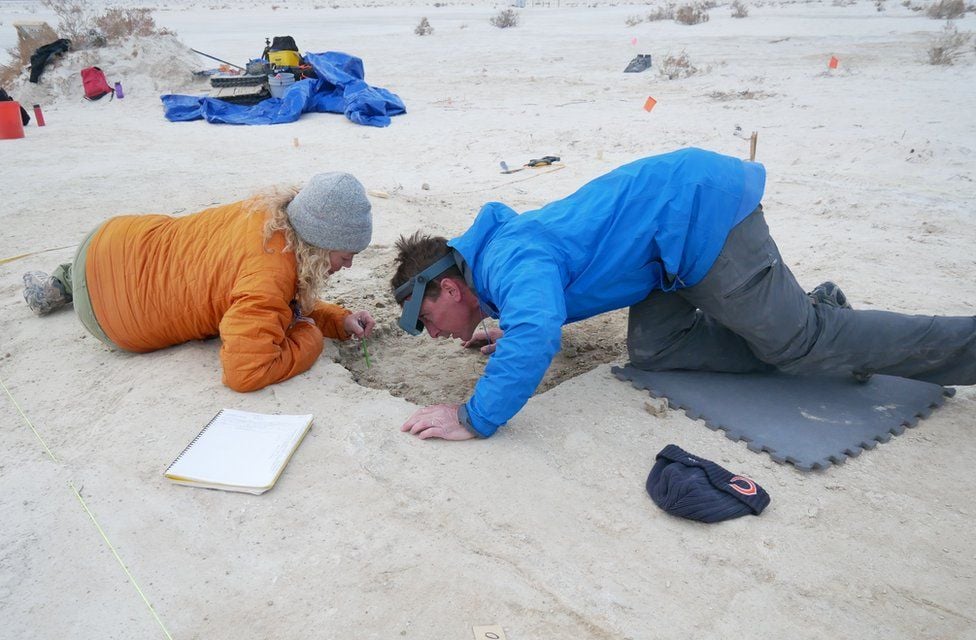
Researchers testing seeds found embedded in the footprints. Photo courtesy of Bournemouth University, U.K.

North America’s oldest human footprints, found in White Sands National Park in New Mexico. Photo courtesy of the National Park Service/U.S. Geological Survey/Bournemouth University, U.K.
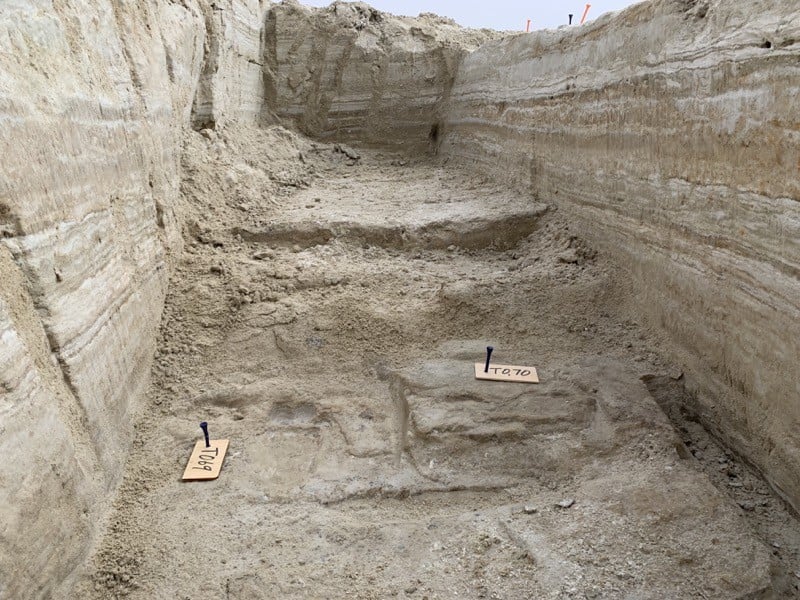
North America’s oldest human footprints, found in White Sands National Park in New Mexico. Photo courtesy of the National Park Service/U.S. Geological Survey/Bournemouth University, U.K.
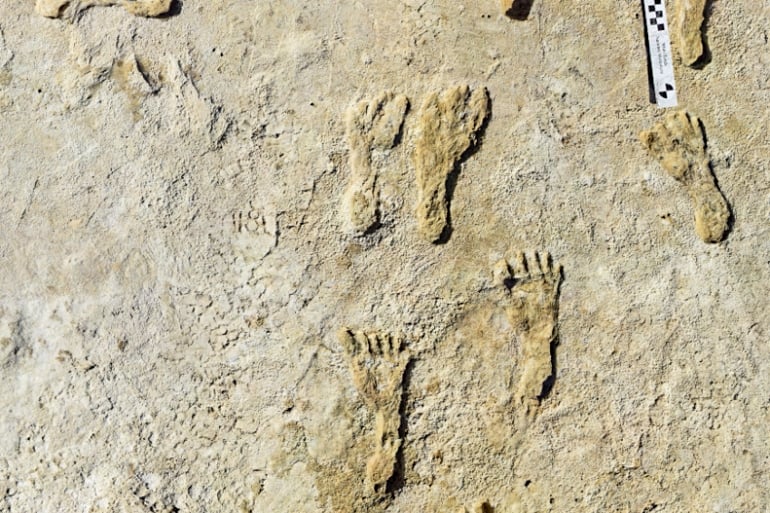
North America’s oldest human footprints, found in White Sands National Park in New Mexico. Photo courtesy of the National Park Service/U.S. Geological Survey/Bournemouth University, U.K.

North America’s oldest human footprints, found in White Sands National Park in New Mexico. Photo courtesy of the National Park Service/U.S. Geological Survey/Bournemouth University, U.K.